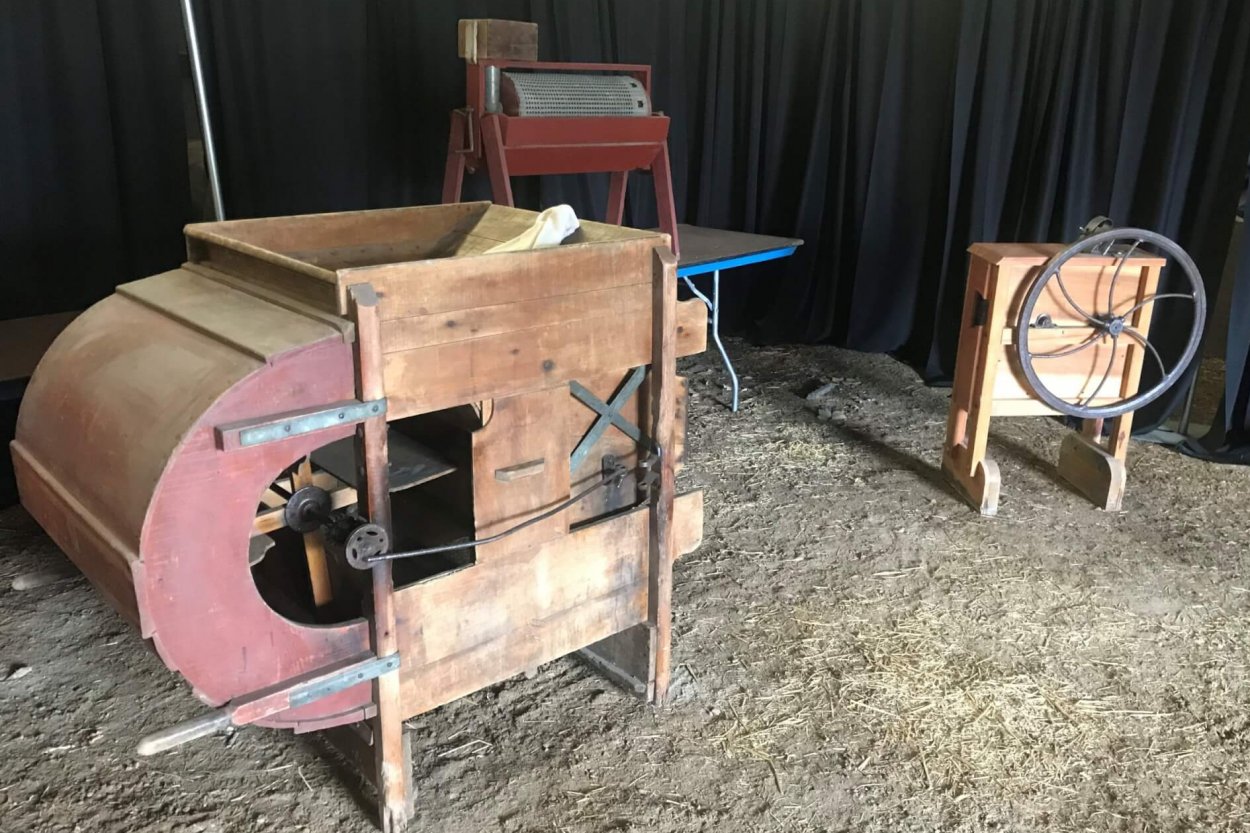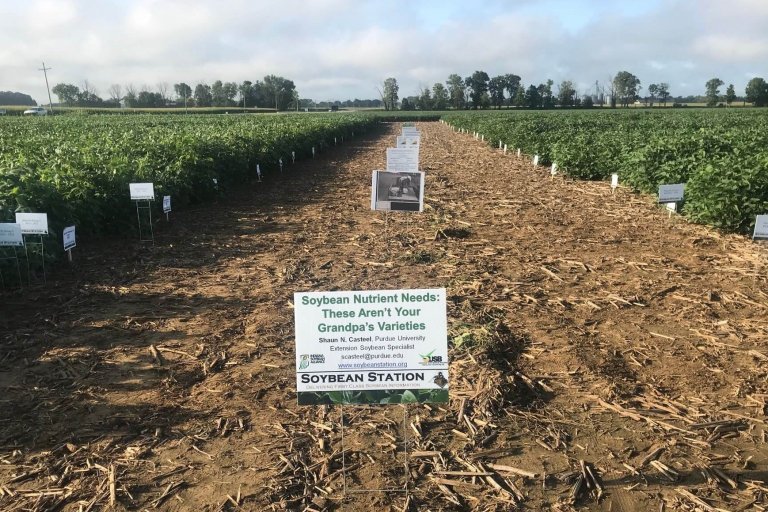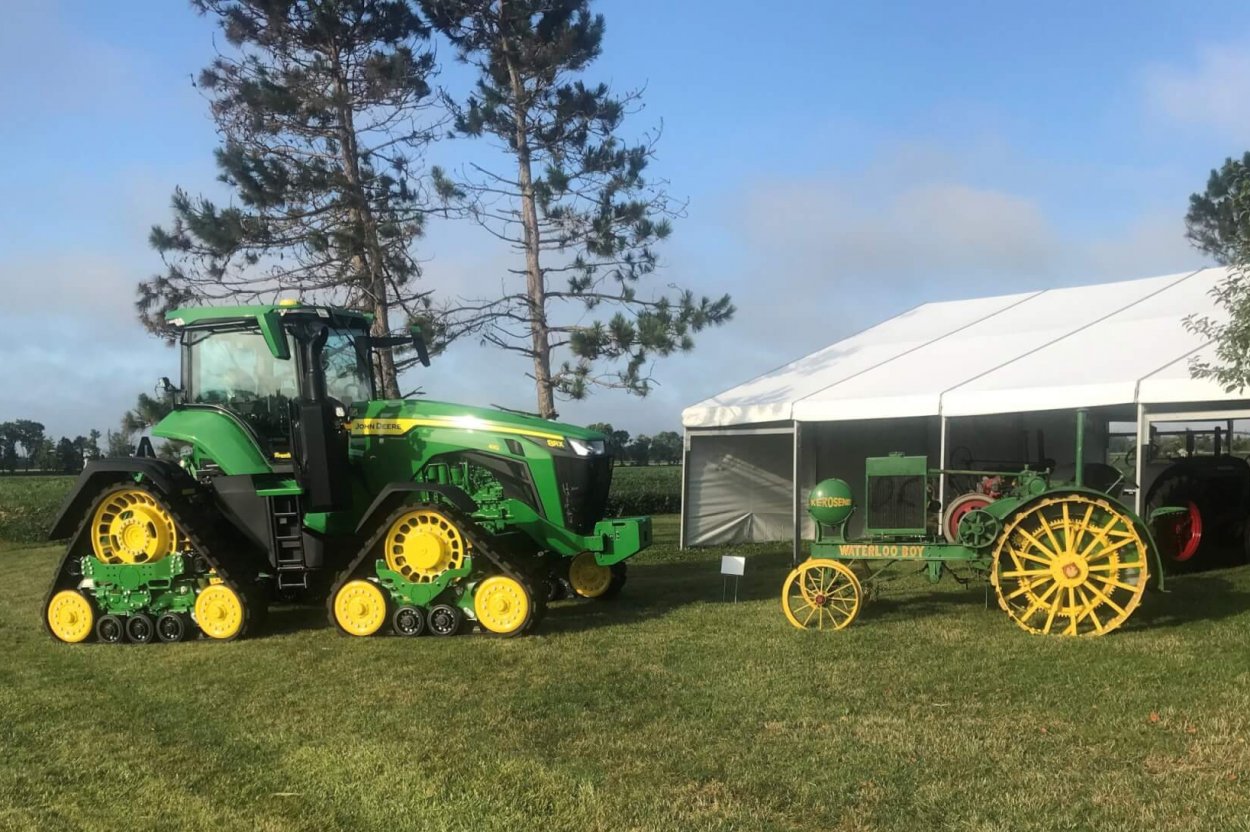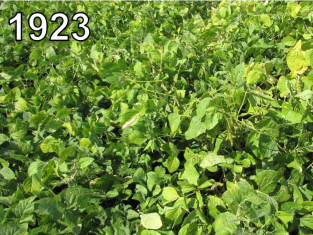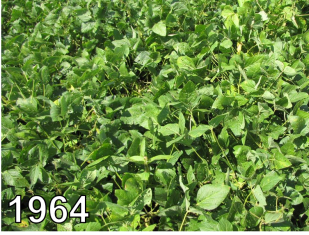A century shared in the soybean field

Several years ago, I organized a soybean field day at the Agronomy Center for Research and Education (ACRE),” recalled Marshall Martin, professor of agricultural economics, the senior associate director of agricultural research and graduate education and assistant dean in the College of Agriculture.
“There were funny-looking plants growing in one of the soybean plots that I didn’t recognize. It looked like some kind of weed or vine on the ground--- something that you’d plant as a ground cover around the front of your house. The plants had small pods with only one or two flat, black seeds each. They were soybeans.”
100th Overview History
“A professor of agronomy had planted them,” Martin explained. “The seeds were an ancient variety that had come from China and been preserved in storage at the University of Illinois in a seed bank. These ancient varieties of soybeans are being used in a breeding program to provide genes to improve disease resistance in modern higher-yielding soybean varieties.” This research was funded by the Indiana Soybean Alliance.
Joint efforts between farmers, universities, the American Soybean Association (ASA) and other groups over the past century have ensured the soybean plant’s value has developed as well. Like soybeans themselves, the industry has experienced an impressively rapid development--an accomplishment celebrated last month with a centennial celebration at the place the ASA started, the Fouts family farm near Camden, Indiana.
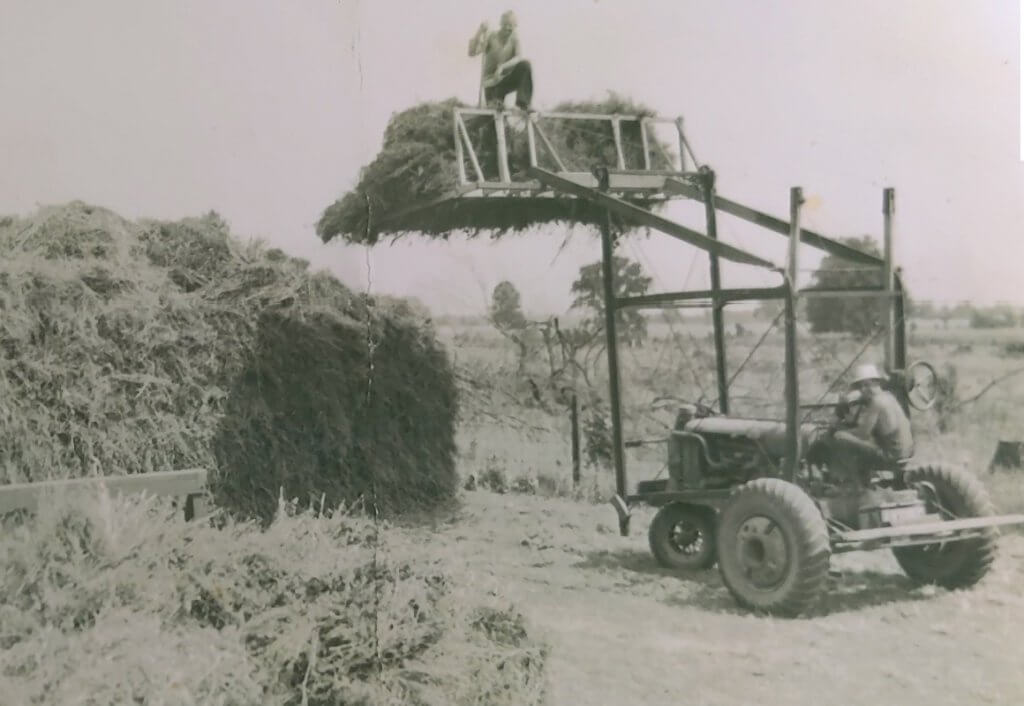 The Fouts family harvesting soybeans. (Photo provided by Claire Crum)
The Fouts family harvesting soybeans. (Photo provided by Claire Crum) In 1904, Purdue alumnus Taylor Fouts, inspired by experiments conducted at Purdue University, became one of America’s first successful soybean farmers. In 1920, Fouts co-founded the ASA and was elected its first president.
Today, the ASA represents and advocates for over 300,000 soybean farmers, focusing on policy development and implementation.
“Collaboration between organizations like the ASA, farmers and educators is why the soybean industry has grown,” said Shaun Casteel, associate professor of agronomy and Extension soybean agronomist. “Together, we’re more than the sum of our parts.
“Everyone wants to see their time and money go farther. We all have the same goal of underpinning soybean production and moving it forward.”
“Many of these advances were made possible by the 1990 farm bill that called for a national soybean farmer referendum,” explained Martin.
The successful referendum authorized checkoff assessments to fund market promotion, research and education. One-half of one percent of the market price per bushel sold is collected. Half of the proceeds go to the state where the soybeans were sold, while the remainder goes to the national checkoff. The United Soybean Board (USB), oversees the investment of national checkoff dollars.
This allowed Indiana’s state affiliate of the ASA, the Indiana Soybean Alliance (ISA), to begin serving the needs of Hoosier soybean farmers in 1991.
Soybeans grown in West Lafayette from research over the years. All are pictured at R6 (full seed), which is typically reached in late August to early September. Planted in 30-in rows. (Photos from Shaun Casteel)
The ISA works with the USB and ASA to create domestic demand, develop new uses for soy products, expand export markets, and develop national policy. It and other state soybean associations supply voting delegates to help the ASA set policy direction.
The ISA funded a Soybean Utilization Endowed Chair at Purdue University to lead research into new uses for soybeans. Nathan Mosier, who has held this chair since 2015, is also currently the department head of agricultural and biological engineering.
“The partnership between the Indiana Soybean Alliance (ISA) and Purdue University has been a strong one that spans both research and educating the next generation of innovators,” explained Mosier. “For more than a quarter century, the ISA has sponsored the Student Soybean Innovation Competition at Purdue University.

“Students from across the university have learned about agricultural products from soy and have applied their technical, business and marketing skills to develop novel consumer products. Several of these have resulted in commercialization as products on the store shelves today.” They include goods such as crayons and candles.
“The ISA has also sponsored research with Purdue University related to soybean production, genetics, and new uses that have increased soybean productivity, opened new markets for soybean-based products and enabled a more sustainable and profitable future for Hoosier farmers,” continued Mosier.
In 2016, Purdue opened the Indiana Corn and Soybean Innovation Center, which included the first field phenotyping facility of its kind in North America. ISA invested $2 million of soybean checkoff money in the center to help train the next generation of researchers in the plant sciences.
Martin served as founding director of the Purdue University Soybean Center. In 2019, Katy Rainey, associate professor of agronomy, was appointed the new director.

“My biggest efforts as the director have been to connect with the soybean centers at other universities,” explained Rainey. “We are bringing in people like nutritionists and food scientists who may not have soy on their radar as a solution to their problems.
“With the advances we’ve made, we can take a look at the needs they have and work with our geneticists to create the answer. We like to say, ‘we have a gene for that.’ There is a greater diversity among soybeans than people realize.”
For 100 years, people have been thinking of ways to use soybeans other than livestock feed. Now, as Martin said, “just about any product you touch has soybeans in it.
“One such development at Purdue University is a soy-based sealant you can spray onto a concrete surface,” Martin said. “The oily substance keeps water from penetrating into the pores of the concrete, reducing freezing and cracking which extends the life of our roads by many years.” The product, Fluid iSoylator was tested and licensed with support from the ISA. It is being applied to many miles of highways in Indiana and other states.
“Purdue University was there, right at the beginning with the founding of the ASA by providing seed and education for the Fouts brothers,” said Martin. “Now, 100 years later, our relationship is still strong with collaborations in research, Extension, and educational programs.”


